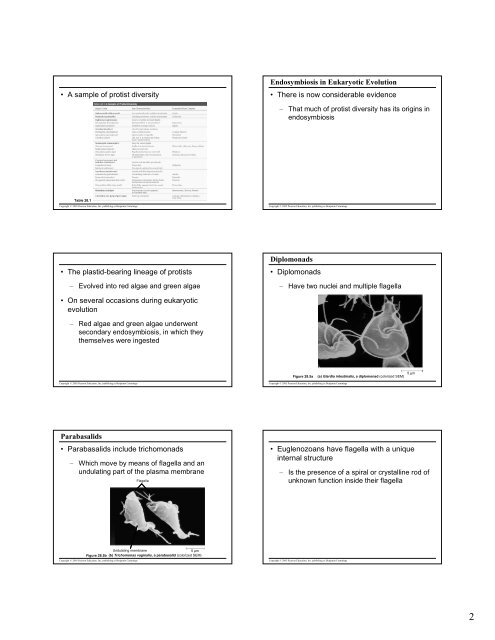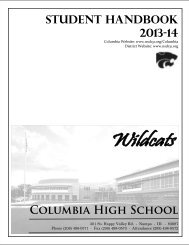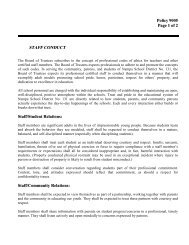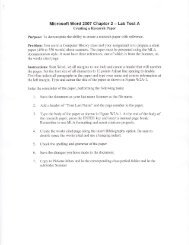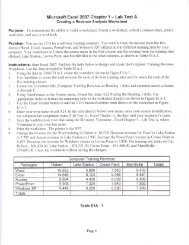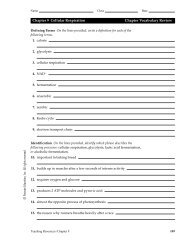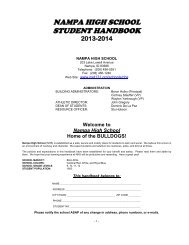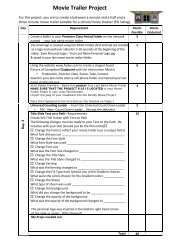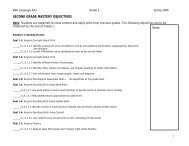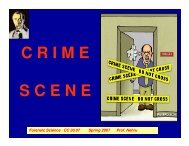Microsoft PowerPoint - 28- protists revised.pdf - NSD Main
Microsoft PowerPoint - 28- protists revised.pdf - NSD Main
Microsoft PowerPoint - 28- protists revised.pdf - NSD Main
Create successful ePaper yourself
Turn your PDF publications into a flip-book with our unique Google optimized e-Paper software.
• A sample of protist diversityEndosymbiosis in Eukaryotic Evolution• There is now considerable evidence– That much of protist diversity has its origins inendosymbiosisTable <strong>28</strong>.1Copyright © 2005 Pearson Education, Inc. publishing as Benjamin CummingsCopyright © 2005 Pearson Education, Inc. publishing as Benjamin Cummings• The plastid-bearing lineage of <strong>protists</strong>– Evolved into red algae and green algaeDiplomonads• Diplomonads– Have two nuclei and multiple flagella• On several occasions during eukaryoticevolution– Red algae and green algae underwentsecondary endosymbiosis, in which theythemselves were ingestedFigure <strong>28</strong>.5a(a) Giardia intestinalis, a diplomonad (colorized SEM)5 µmCopyright © 2005 Pearson Education, Inc. publishing as Benjamin CummingsCopyright © 2005 Pearson Education, Inc. publishing as Benjamin CummingsParabasalids• Parabasalids include trichomonads– Which move by means of flagella and anundulating part of the plasma membraneFlagella• Euglenozoans have flagella with a uniqueinternal structure– Is the presence of a spiral or crystalline rod ofunknown function inside their flagellaUndulating membrane 5 µmFigure <strong>28</strong>.5b (b) Trichomonas vaginalis, a parabasalid (colorized SEM)Copyright © 2005 Pearson Education, Inc. publishing as Benjamin CummingsCopyright © 2005 Pearson Education, Inc. publishing as Benjamin Cummings2


